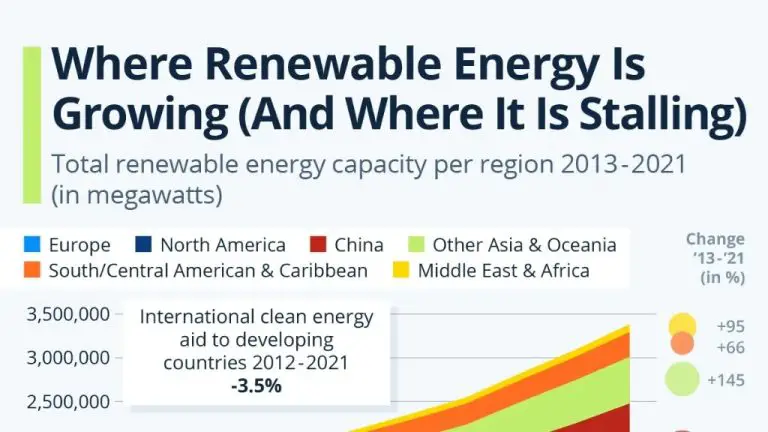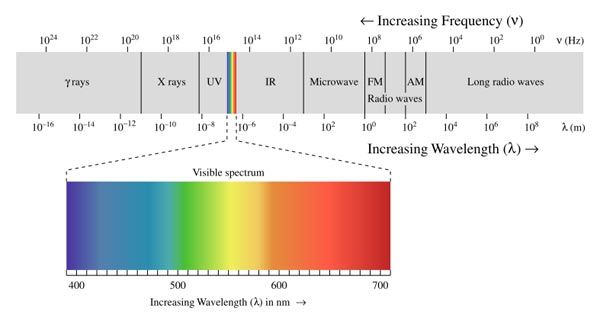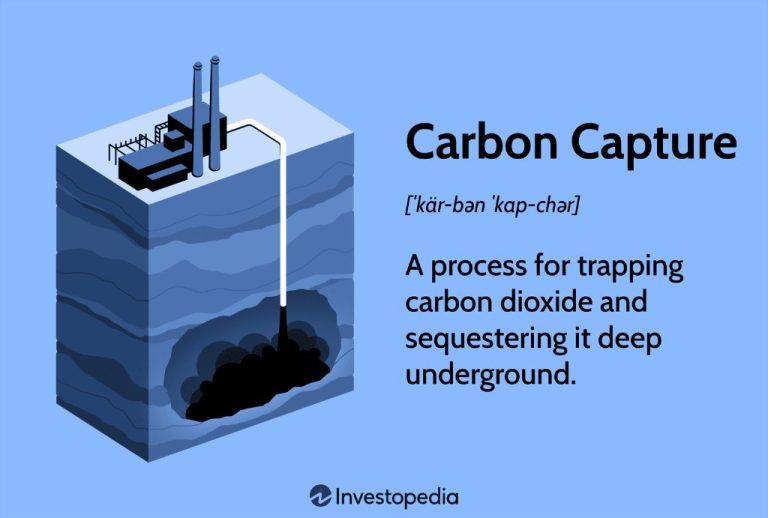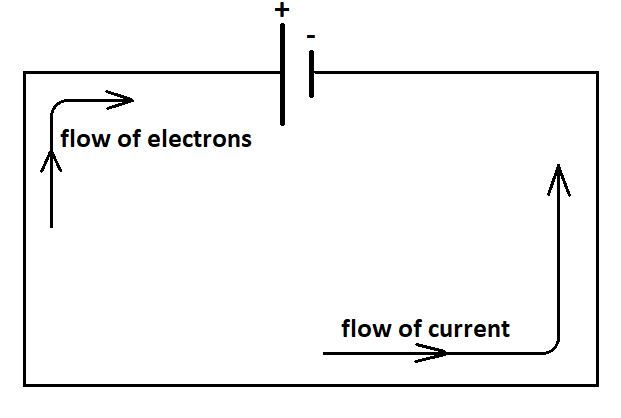Why Is Energy Called Renewable?
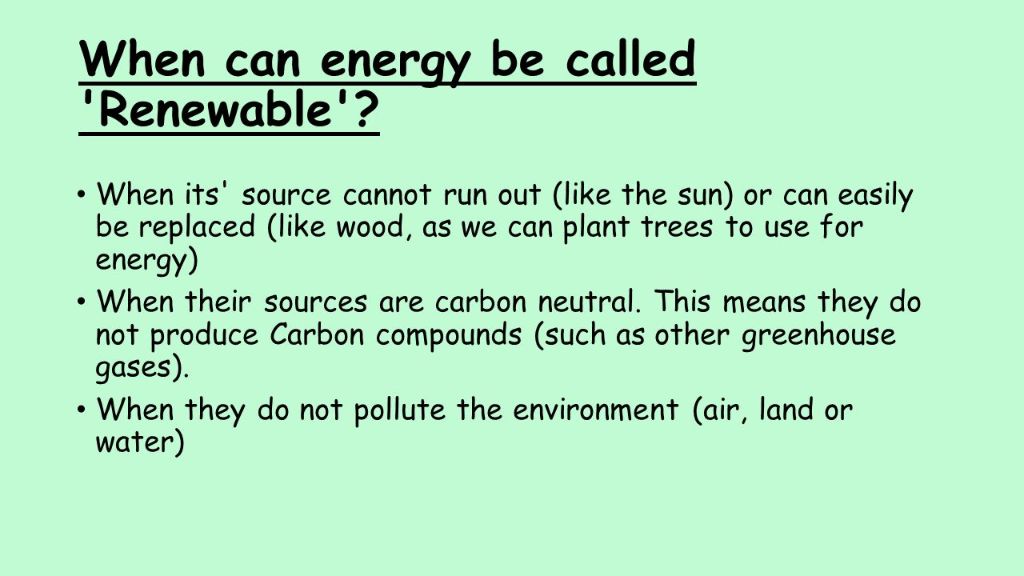
Renewable energy comes from natural sources that are constantly replenished, such as sunlight, wind, water, plants, and geothermal heat. Unlike fossil fuels, which are finite resources, renewable energy sources regenerate over short periods of time and will never run out. Renewable energy is becoming increasingly important as countries try to move away from non-renewable energy sources like coal, oil, and natural gas. These fossil fuels emit greenhouse gases when used, contributing to climate change. Renewable energy sources produce much fewer emissions, so they are considered a sustainable way to meet energy needs while minimizing environmental impacts.
Some key reasons why renewable energy is so important include:
- Reduces reliance on fossil fuels
- Lowers greenhouse gas emissions
- Diversifies and increases energy security
- Creates economic development and jobs
- Improves public health
This article will examine the different types of renewable energy, the environmental and economic benefits, and the challenges to scaling up adoption of renewables worldwide.
Renewable vs non-renewable energy
The key difference between renewable and nonrenewable energy sources is in their ability to replenish themselves. Renewable energy comes from natural sources that are constantly replenished – like sunlight, wind, water, plants, and geothermal heat. These energy sources are virtually inexhaustible, making them sustainable for long-term energy use.
In contrast, nonrenewable energy sources like coal, oil, natural gas, and nuclear energy are available in limited supplies. These finite resources take a long time to form naturally, from hundreds to millions of years. Once depleted they cannot be replenished, at least not in time frames that are relevant to human energy consumption.
Fossil fuels like coal, oil, and natural gas are the most commonly used nonrenewable energy sources. The reserves for these are being rapidly depleted. Using renewable energy sources reduces reliance on fossil fuels, improving sustainability.
According to the U.S. Energy Information Administration, in 2019 about 11% of total U.S. energy consumption was from renewable energy sources, while the remaining 89% came from nonrenewable sources like petroleum, natural gas, and coal.
Sources:
https://www.inspirecleanenergy.com/blog/clean-energy-101/difference-between-renewable-nonrenewable-energy
Types of renewable energy
There are several major types of renewable energy sources that are used to generate electricity and power today:
- Solar energy – Solar panels convert sunlight into electricity. Solar thermal collectors use sunlight to heat water or air.
- Wind energy – Wind turbines capture the wind’s energy with their rotating blades, converting it into electricity.
- Hydropower – Flowing water from rivers or reservoirs spins turbines to generate electricity.
- Geothermal energy – Steam or hot water from beneath the earth’s surface is used to produce energy.
- Biomass – Organic matter like plants, wood, municipal solid waste is used to generate energy.
These renewable sources provide alternatives to burning fossil fuels like coal, oil and natural gas, which produce greenhouse gases.
Source: https://www.eia.gov/energyexplained/renewable-sources/
Renewable energy is naturally replenished
Renewable energy sources derive from natural processes that are constantly replenished. Some key examples are:
Solar power – The sun radiates an enormous amount of energy that reaches Earth continuously. Although solar energy may not be available at night or on cloudy days, the sunlight is essentially limitless for practical human purposes (https://books.google.com/books?id=-g6kDQAAQBAJ&pg=PA11&lpg=PA11&dq=%22renewable+energy+replenished+naturally%22&source=bl&ots=WVyuqXTrVB&sig=ACfU3U20E6JupvNDDL4OwaxbgIiLCWHDtA&hl=en&sa=X&ved=2ahUKEwjcrpuL5aCEAxU9jIkEHU2RATsQ6AF6BAgJEAM).
Wind power – The kinetic energy of wind is driven by solar heating of the atmosphere and the Earth’s rotation. As long as the sun shines and the Earth spins, there will be wind. While it varies based on weather and location, the wind resource is virtually inexhaustible.
Hydropower – The water cycle continually replaces the water in dams, rivers, and reservoirs, making hydropower sustainable over the long term. The evaporation, condensation, precipitation, and runoff of the global water cycle ensures a constant supply.
Geothermal – There is a tremendous amount of heat within the Earth due to natural radioactive decay and residual heat from its formation. This geothermal energy is constantly flowing and being replenished from deep inside the Earth.
Biomass – Photosynthesis converts solar energy into chemical energy contained in plant material. As long as the sun shines, plants can grow to provide a renewable fuel source. Waste organic matter can also be reused as biomass.
The key point is that these natural flows and cycles make renewable resources virtually inexhaustible and sustainable over the long term, unlike finite fossil fuels.
Reduces reliance on fossil fuels
Renewable energy sources like solar, wind, and hydropower provide clean alternatives to burning fossil fuels like coal, oil, and natural gas for energy. Fossil fuels are non-renewable, meaning they draw on finite resources and will eventually run out. The reserves of coal, oil, and natural gas on Earth took hundreds of millions of years to form, and we cannot replace them nearly as fast as we are using them up.
By switching to renewable sources like solar and wind, we reduce our dependence on fossil fuels. This conserves remaining fossil fuel reserves and prolongs how long they can continue meeting our energy needs. Renewables generated 17% of U.S. electricity in 2020, displacing that much fossil fuel usage [1]. With further renewable energy development, we can displace even more fossil fuel dependence. Phasing out fossil fuels for electricity, heating, and transportation will enable the remaining reserves to last longer for other uses that may be harder to replace, like plastics manufacturing.
Environmental benefits
One of the key advantages of renewable energy is that it produces dramatically lower carbon emissions compared to fossil fuels like coal, natural gas, and oil. Renewables such as solar, wind, geothermal, and hydropower generate little to no global warming emissions during their operation (source 1). Using renewables leads to cleaner air and water, reducing smog, acid rain, and other forms of pollution. Widespread adoption of renewable energy is crucial for mitigating climate change and meeting emissions reduction targets (source 2).
According to one study, doubling the share of renewables in the global energy mix by 2030 could reduce emissions by up to 10 billion tons per year, equivalent to closing over 2,000 coal-fired power plants. The researchers found the emissions reduction impact is so substantial because renewables displace fossil fuels directly rather than just offsetting continued fossil fuel use (source 3). As more countries, states, and cities transition to renewable electricity, heating, and transportation, they are dramatically shrinking their carbon footprints and improving public health.
Increased energy security
Renewable energy sources like solar, wind, and hydro power allow countries to produce energy domestically rather than relying on imported fossil fuels. This increases energy independence and security. According to the St. Louis Federal Reserve, “Renewable energy increases energy security, improves air quality by reducing pollution, and reduces greenhouse gas emissions.”
By investing in renewable energy infrastructure within its own borders, a country can meet more of its energy needs with domestic resources. This reduces vulnerability to disruptions in the global fossil fuel supply chain. The Hawaii National Guard has expanded renewable energy efforts to “increase[] energy security by mitigating a heavy reliance on the existing electrical distribution system and imported fossil fuels” (source).
With renewable energy, there is no risk of oil spills or drilling mishaps that can disrupt ocean ecosystems and coastal communities. Renewables provide a stable, indefinitely renewable energy supply, unlike finite fossil fuel reserves (source). This gives countries greater control over their energy future.
Economic Benefits
Renewable energy provides significant economic benefits, including job creation, lower energy prices, and positive impacts on economic growth. According to the National Renewable Energy Laboratory (NREL), renewable energy industries in the United States employed about 777,000 people in 2019, representing a rise of nearly 5% from 2018 levels (source). The solar and wind industries alone provided over 500,000 jobs. Renewable energy investments also help lower energy prices. The costs of solar and wind power have declined dramatically in the past decade, driving down wholesale electricity prices (1). Lower electricity costs help stimulate the broader economy. One study by the Lawrence Berkeley National Laboratory found that a 25% renewable energy target in the U.S. by 2025 could lower electricity prices by up to 10% and boost GDP by up to 0.3% (source). On a local level, renewable energy projects increase tax revenues and generate lease payments for communities that can be reinvested locally.
Challenges of renewable energy
While renewable energy has many benefits, there are also challenges to overcome in its widespread adoption. One key challenge is intermittency – many renewable sources like wind and solar power are dependent on weather conditions and so their energy generation can fluctuate (Power and Beyond, 2022). This creates difficulties in reliably matching energy supply with demand. Energy storage solutions are needed to store excess renewable energy when supply exceeds demand, and discharge it when demand is higher than supply.
Transmission infrastructure also needs major upgrades to handle transporting large amounts of energy from regionsoptimal for renewable generation to load centers where demand is high. Long distance transmission lines are required but can be difficult and expensive to build (Power and Beyond, 2022). Generators and utilities also need to develop better forecasting of renewable generation and more flexible power grids to handle intermittency.
Despite these challenges, improvements in energy storage, transmission, and grid flexibility along with advancements in renewable technologies can help overcome barriers to large scale renewable adoption. With the right strategies, these challenges are surmountable.
Conclusion
The world is in need of a major energy transition from fossil fuels to renewable sources in order to mitigate climate change and build a sustainable future. Why energy is called renewable can be seen clearly in the environmental and economic benefits. Renewable energy comes from natural sources that are constantly replenished such as sunlight, wind, water, and geothermal heat. The growth of renewable energy has been increasing rapidly as costs have declined, and this expansion needs to continue.
While renewable energy currently accounts for over a quarter of global electricity production, the International Energy Agency projects renewables will supply over 60% of electricity generation by 2040. However, more ambitious growth is required to limit warming to 1.5°C and avoid the worst climate change impacts. Continued investment, supportive policies, technological advances, and public pressure for a clean energy transition will enable the exponential growth and mainstream adoption of renewable energy in the coming decades.
The transition to renewable energy promises to reduce air pollution, improve public health, enhance energy security, drive economic growth in the clean tech sector, and help achieve a zero-emissions future. By understanding why energy is called renewable, we recognize the immense potential renewable energy presents for building a sustainable world.

